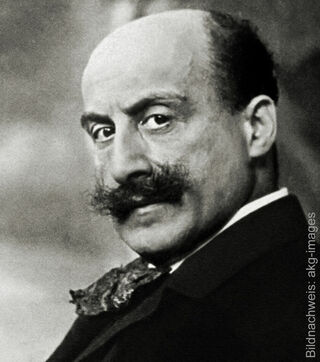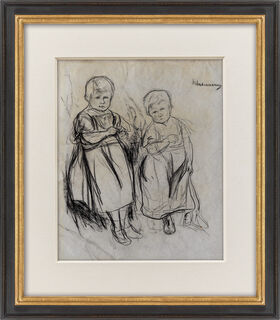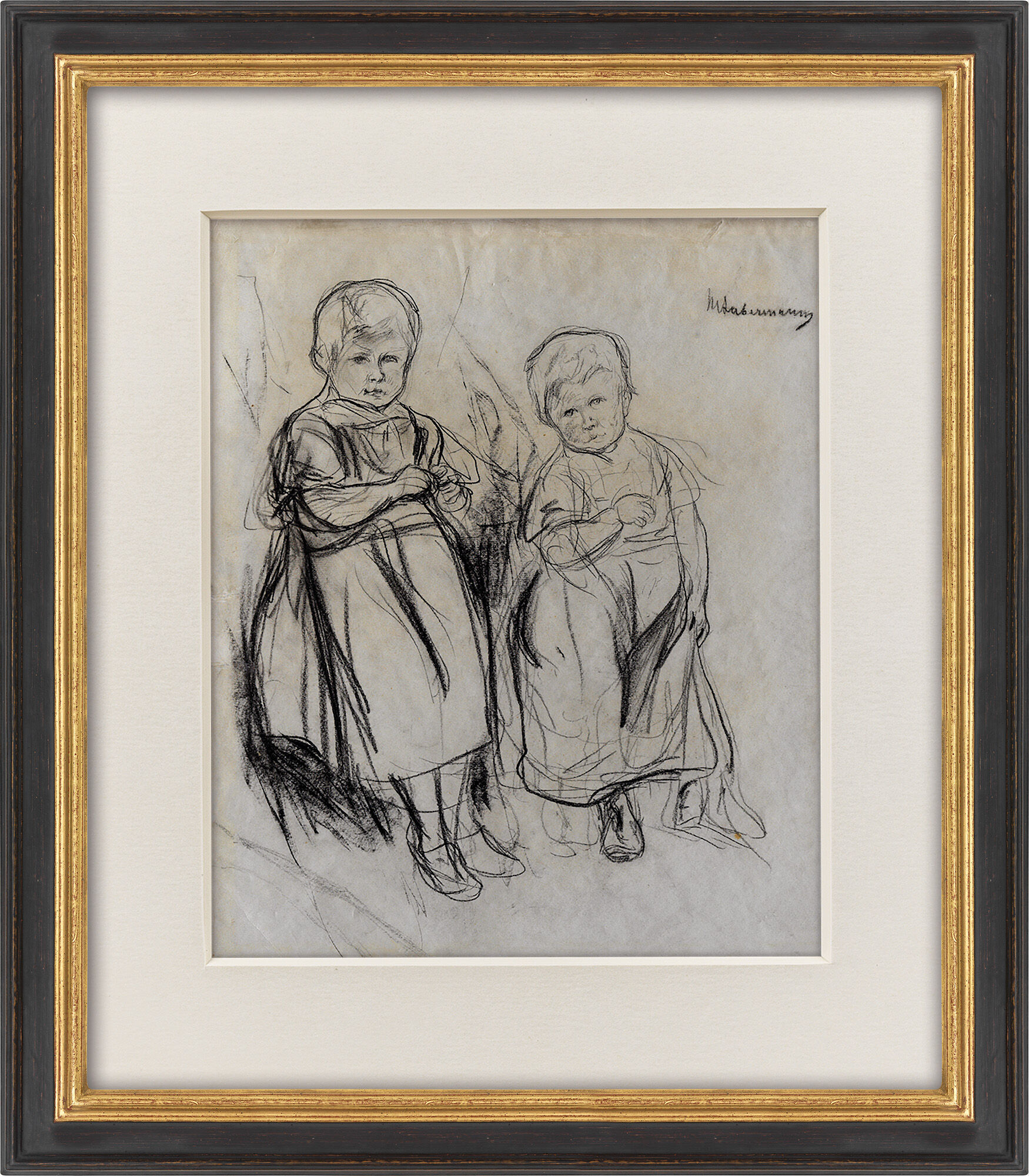Picture "Two Children" (Unique piece)


Picture "Two Children" (Unique piece)
Quick info
unique piece | signed | charcoal on paper | framed | size 62.5 x 54.5 cm
Detailed description
Picture "Two Children" (Unique piece)
At the beginning of the 20th century, Liebermann created about thirty oil paintings a year, in addition to hundreds of drawings and prints. Here we present one of these rare drawings executed in charcoal: The "Two Children" seem to have been fixed directly by Liebermann while he was making the portrait - thus, the two girls still fascinate us when we look at this study. On the back of the work is another work, the drawing "Three Running Men" - it will probably also have served as preparatory work for a painting.
Charcoal on paper. Signed. Drawing on the back. Motif size/sheet size 40.5 x 33.52 cm. Size in frame 62.5 x 54.5 cm as shown.

About Max Liebermann
1847-1935
Together with Lovis Corinth and Max Slevogt, Max Liebermann formed the triumvirate of German Impressionism and received numerous honours throughout his life. Through his commitment to elevating the life and work of ordinary people to art in unpretentious simplicity meant that Liebermann initially had to fight for recognition.
Liebermann only became a celebrated painter at the turn of the century when he increasingly devoted himself to motifs and scenes from the life of the upper-middle classes. He was an appointed professor at the Royal Academy and a member of the jury at the Academy exhibitions in 1897. In 1899 he founded the Berlin Secession and made it the most important German art institution. In 1920 Liebermann became president of the Prussian Academy and in 1932 its honorary president.
Because of his Jewish ancestry, he was ostracised by the Nazis and forced to resign from all offices. While watching the Nazis celebrate their victory by marching through the Brandenburg Gate from the window of his flat Liebermann supposedly said: "I can't eat as much as I want to vomit." In 1935 he died at the age of 87 after a long illness.
For Max Liebermann, nature was always a man-made (and man-inhabited) paradise. He found his motifs in gardens, parks and in bourgeois places of amusement. Liebermann is a master of staged light, which he lets fall on his scenes, often filtered through a canopy. The individual beams of light that penetrate to the ground are striking and have gone down in art history as "Liebermann's sunspots".
Depiction of typical scenes from daily life in painting, whereby a distinction can be made between peasant, bourgeois and courtly genres.
The genre reached its peak and immense popularity in Dutch paintings of the 17th century. In the 18th century, especially in France, the courtly-galant painting became prominent while in Germany the bourgeois character was emphasised.
A one-of-a-kind or unique piece is a work of art that has been personally created by the artist. It exists only once due to the type of production (oil painting, watercolours, drawing, etc.).
In addition to the classic unique pieces, there exist the so-called "serial unique pieces". They present a series of works with the same colour, motif and technique, manually prepared by the same artist. The serial unique pieces are rooted in "serial art", a type of modern art, that aims to create an aesthetic effect through series, repetitions and variations of the same objects or themes or a system of constant and variable elements or principles.
In the history of arts, the starting point of this trend was the work "Les Meules" (1890/1891) by Claude Monet, in which for the first time a series was created that went beyond a mere group of works. The other artists, who addressed to the serial art, include Claude Monet, Piet Mondrian and above all Gerhard Richter.


